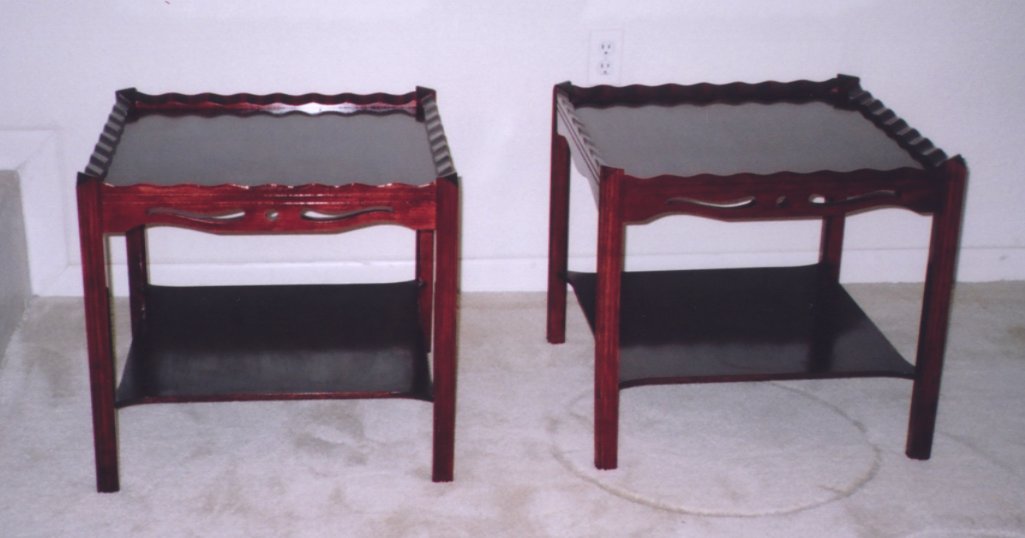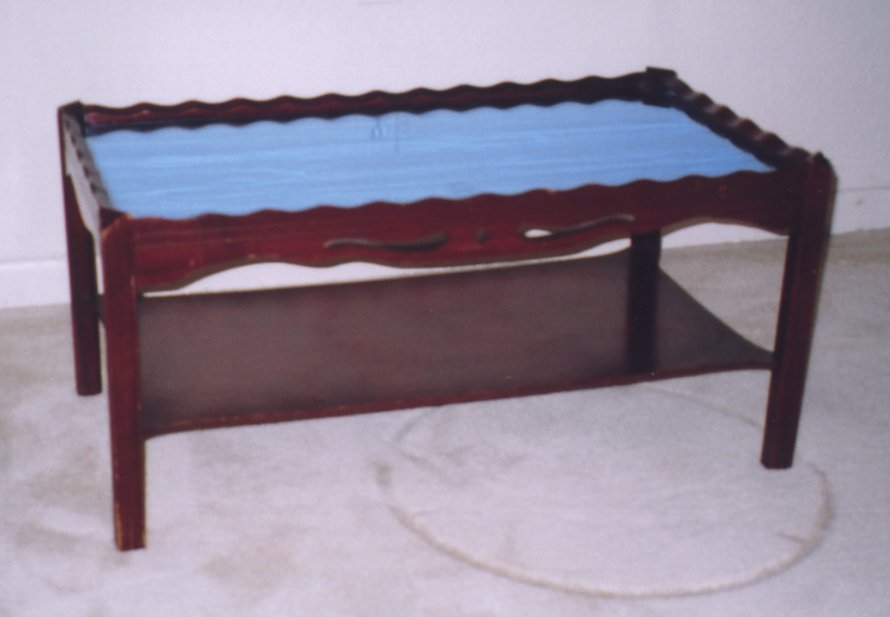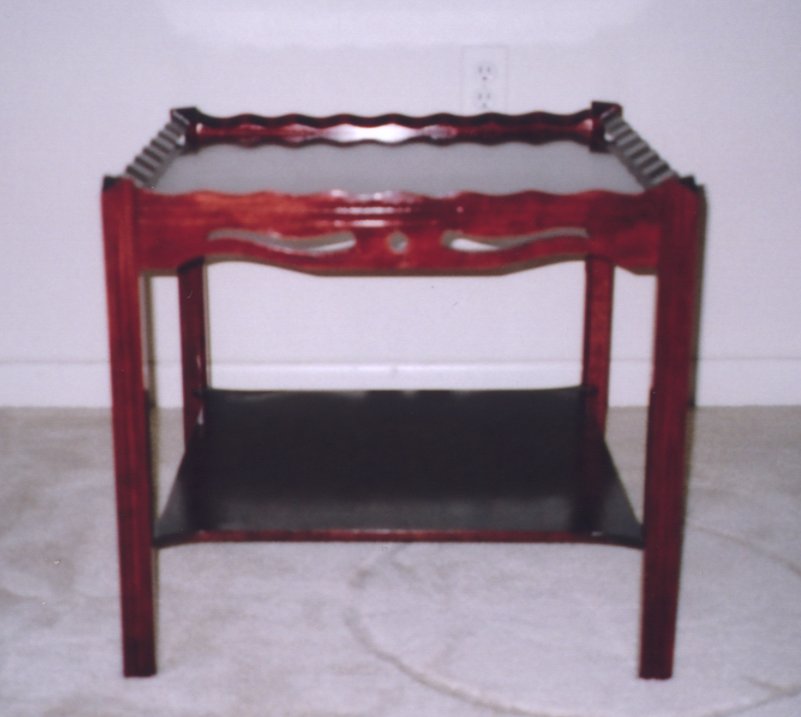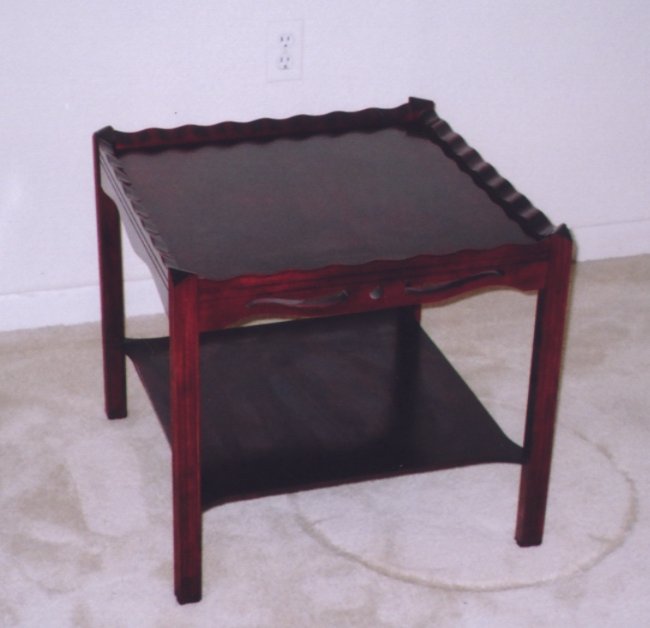Specifications
These two tables are made of maple, stained with a medium red
mahogany color and a high-gloss polyurethane finish.
Story
At the time of this writing (2005), these were the finest pieces of
furniture I had made. This includes some subjective mix of the
craftsmanship, the complexity of the construction and the final visual
appearance.
When we moved into our house, we found a beatiful tavertine coffee
table that exactly matched our fireplace. This was not cheap, and the
cost of the two matching end tables was a little much. We also had an
heirloom type coffee table from my wife's uncle that would occupy the
living room. Thus, we had two coffee tables and no end tables for the
couch. Not wanting to spend for the tavertine end tables left me with
the idea of making matching end tables to the heirloom coffee table.
I set about trying to copy the construction and design of the original
table, though I had to increase the table height, while adapting the
wavy patterns to a shorter length table. I needed all sorts of
templates and jigs to gets the deisgns, the angles and such. All
sorts of things I had to do for the first time.
The trickiest part was creating the mortise and tenon joints that
joined the side to the legs. Aside from never having made a mortise
and tenon joint before, I didn't have any fancy equipment to do this:
just a table saw, drill press and chisels. Also, due to the
relatively thin legs, two sides tenons could not fit in a single leg
without bevelling the end of the tenon. Tricky business. It took me
a very, very long time (I had to make 8 of these), and I got some
serious blisters from all the chiseling (I wasn't very experiences
with chisels at the time). However, the final result was some pretty
tight fitting joints. In fact, these are much stronger than what the
original table appears to be.
Miscellaneous Notes/Thoughts
- Figuring out the wood of the original table was tricky. It had a dark redish finish, like rosewood or redheart or similar. Redheart seemed the closest, but someone at a store said it was actually stained and that my doing then same would probably be the best option. They suggested maple because it had the same wood grain pattern.
- The original table has a blue-glass mirror on top which I attempted to reproduce (unsuccessfully). I found that no one seems to make that kind of mirror, and even looking into finding tinted glass and having it "silvered" was difficult. I could not find a glass with the same tint, though I did find I could get it silvered for about $40. The combination of the expense of silvering, and not finding the right tint made me abandon this search.
- The horizontal surfaces (table top and bottom shelf) on the original were made of 3/8 playwood, which turned out to be somewhat of a rare item around town. I eventually did locate some birch plywood of this dimension, which luckily has a reasonably good matching grain and stained similarly to the maple.
- I learned an important lesson in glueing while making the legs. The legs need to be 1-1/4" thick and I only had 1" stock (3/4" pieces). So I simply glued two together to make a thicker piece. There was a little warp in the pieces, but I found that clamped tight enough I could get a flush match. The problem came first when I was cutting these down to size. As the piece got thinner, the forces keeping the piece straight diminished, and one of the legs reverted back to a slightly bowed shape. It isn't that noticable, but the table saw blade noticed it as it bent back into the blade and bound it up. I caught what was happening at the time, so did not damage to the pieces, but the bowed nature of this piece (and to a lesser extent other pieces), made all subsequent operations tricky. For instance, routing the grooves down the length of the leg resulted in some uneven depths and careful handling to make sure that stayed relative unnoticable. You hav eto look on the table to find this "problem leg", but I usually keep that side facing the wall.
 Cassandra.org
Cassandra.org




